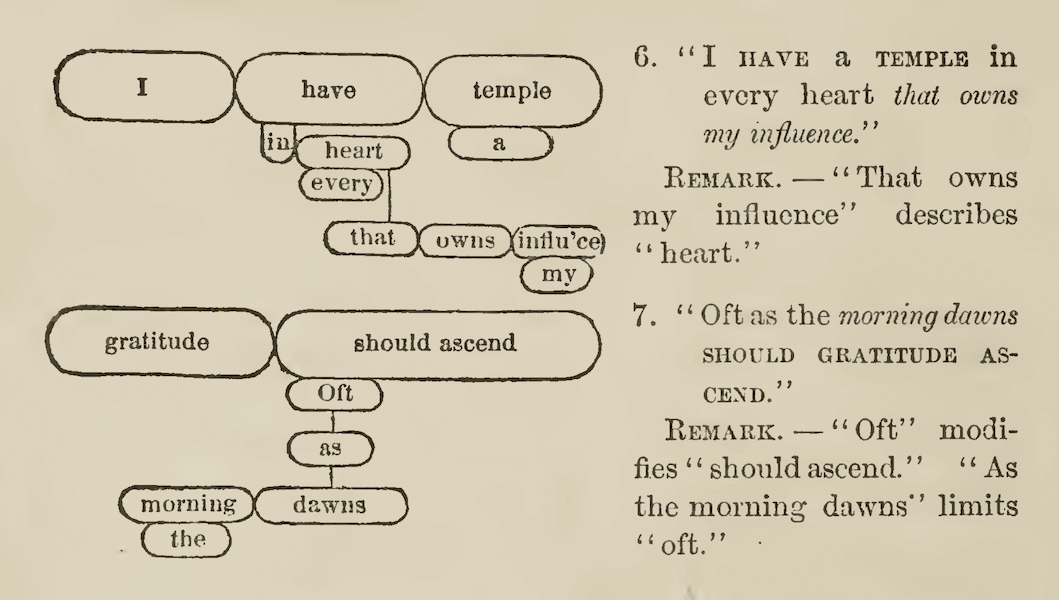If you follow my YouTube channel, you will have noticed that I’ve posted a few simple videos about how to get started with sentence diagramming. The comments I get are funny because one will be someone saying they love diagramming sentences and the next one will be someone saying they hate diagramming sentences. It seems to bring out strong feelings.
Should Students Be Required to Learn Sentence Diagramming?
Some people have asked whether I think diagramming is an important skill for students to learn, and I actually don’t. I just think it’s fun, like a different kind of word puzzle.
When I retaught myself how to diagram a few years ago to make the Grammar Girl Christmas cards, which have a diagrammed sentence inside, I felt like it did help me think about sentences in a more structured way. For example, I would notice more that something was an adverb or a prepositional phrase, but a recent article on the National Council of Teachers of English website noted that “among recent research studies, not one justifies teaching grammar to help students write better.” By “grammar,” they mean things like identifying parts of sentences, identifying passive sentences, and identifying restrictive and nonrestrictive modifiers, and that would include the things you learn to do sentence diagramming.
Who Invented Sentence Diagramming?
So where did this controversial almost-a-word game thing so many of us were taught in school come from?
Sentence diagramming got its start in 1847 when S. W. Clark, principal of the East Bloomfield Academy, published A Practical Grammar: In Which Words, Phrases & Sentences are Classified According to Their Offices and Their Various Relationships to Each Another, which contained balloon diagrams—the predecessor to today’s line diagrams.
There were a number of competing diagramming systems in the 1800s and eventually a line diagram system created by Alonzo Reed and Brainerd Kellogg, professors a the Brooklyn Polytechnic Institute, published in Graded Lessons in English (1875) and Higher Lessons in English (1877) won. The method, which was taught extensively up to the 1970s, is named after the inventors and known as the Reed-Kellogg system, and it made the professors quite wealthy.
In the Reed-Kellogg system, nouns, verbs, and direct objects are placed on a horizontal line and separated by short vertical lines. Adjective, adverbs, and prepositional phrases are placed on horizontal lines extending below the main horizontal line.
If you’ve never seen a sentence diagram before, check out my videos on the Grammar Girl YouTube channel. Chances are, you’ll either love them or hate them.




